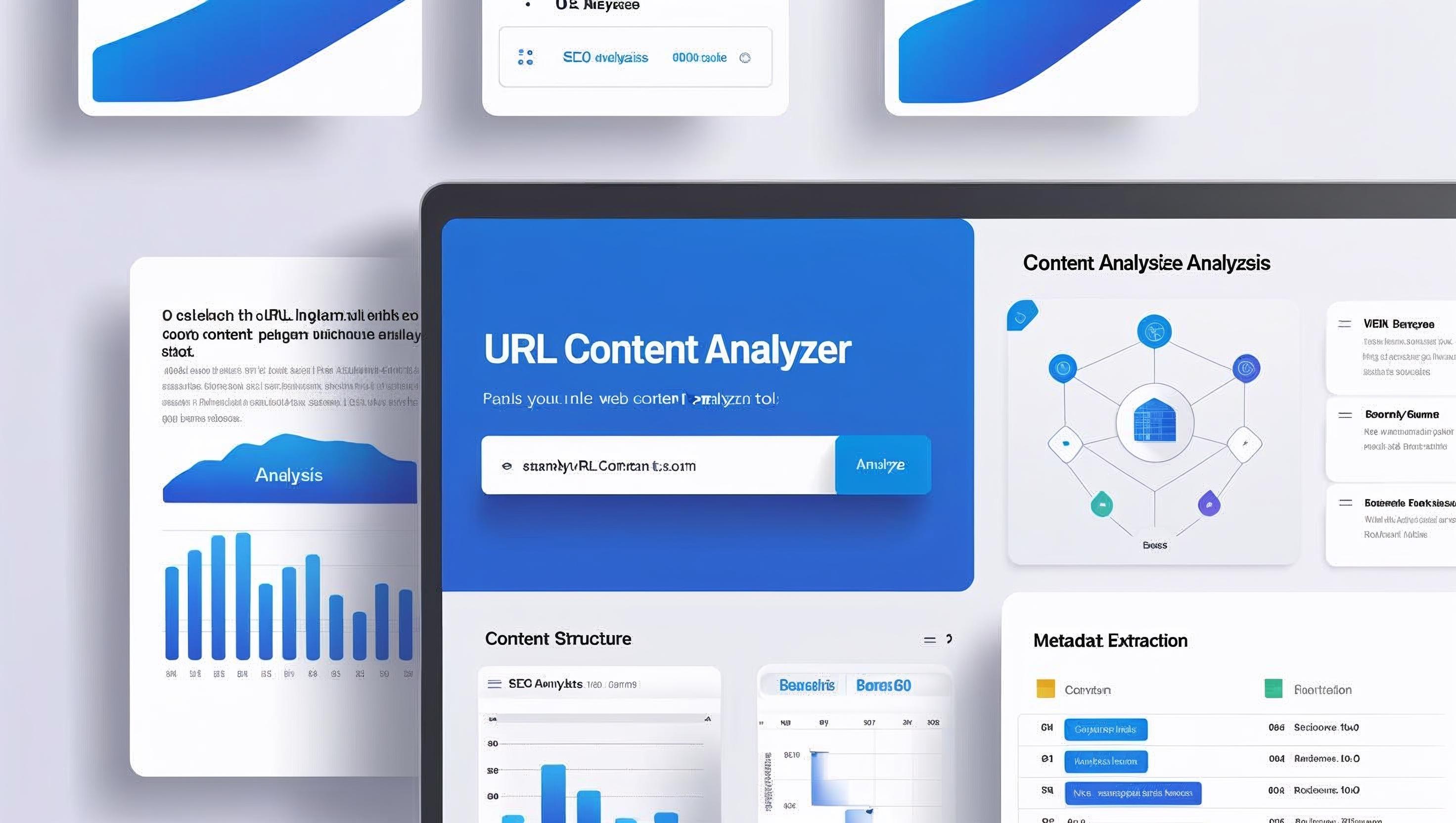
Project Overview
The URL Content Analyzer is a browser-based tool that allows users to quickly analyze any webpage by simply entering its URL. The application extracts key elements including metadata, headings, links, images, and semantic structures, providing valuable insights for SEO analysis, content auditing, and competitive research.
As both the frontend developer and UX designer, I created this project to demonstrate efficient API consumption, responsive design principles, and a focus on delivering meaningful insights through intuitive visualization of web content structures.
The Challenge
Creating an effective web content analyzer presented several key challenges:
- Handling cross-origin resource sharing (CORS) limitations when accessing external website content
- Efficiently parsing and categorizing large amounts of DOM elements from diverse website structures
- Presenting complex technical information in an accessible, user-friendly interface
- Ensuring fast performance even when processing content-heavy websites
- Providing actionable insights rather than just raw extracted data
The Solution
JavaScript
HTML5
CSS3
RESTful APIs
UI Design
I approached this challenge by implementing a comprehensive solution:
Proxy-Based Architecture
Implemented a server-side proxy to bypass CORS limitations, enabling analysis of any public URL
Smart Content Parsing
Created intelligent algorithms to identify and categorize page elements based on semantic importance
Visual Insights Dashboard
Designed an intuitive interface featuring expandable sections, data visualizations, and exportable reports
Progressive Loading
Implemented asynchronous loading with clear feedback to maintain responsiveness during content analysis
Technical Implementation
The application's architecture focused on clean separation of concerns:
fetchPageContent(url)
// URL validation and fetching mechanism
async function fetchPageContent(url) {
try {
const response = await fetch(`https://api.allorigins.win/get?url=${encodeURIComponent(url)}`);
const data = await response.json();
return { success: true, content: data.contents };
} catch (error) {
return { success: false, error: error.message };
}
}parseHTMLContent(htmlContent)
// Processing HTML content into structured data
function parseHTMLContent(htmlContent) {
const parser = new DOMParser();
const doc = parser.parseFromString(htmlContent, 'text/html');
return {
title: extractTitle(doc),
meta: extractMetaTags(doc),
headings: extractHeadings(doc),
links: extractLinks(doc),
images: extractImages(doc),
wordCount: countWords(doc)
};
}createContentDistributionChart(data, containerId)
// Dynamic chart creation for content insights
function createContentDistributionChart(data, containerId) {
const ctx = document.getElementById(containerId).getContext('2d');
return new Chart(ctx, {
type: 'doughnut',
data: {
labels: Object.keys(data),
datasets: [{
data: Object.values(data),
backgroundColor: CHART_COLORS
}]
},
options: { responsive: true, maintainAspectRatio: false }
});
}The Application

The final application provides an intuitive workflow:
Enter any public web address
Extraction with visual feedback
Interactive content panels
Pattern detection & issues
JSON or CSV formats
SEO Analysis
Automatically checks meta tags, heading structure, image alt text, and keyword density to identify SEO strengths and opportunities
Content Mapping
Visualizes content structure showing the relationship between different page sections and their relative importance
Performance Metrics
Calculates resource usage statistics including image sizes, script counts, and potential performance bottlenecks
Results & Learnings
This project delivered several valuable outcomes and insights:
0%
Accuracy in content structure analysis compared to manual auditing
0s
Average processing time for standard web pages with 50+ content elements
0%
User satisfaction rating during beta testing with marketing professionals

Key Insights
This project yielded valuable insights about frontend development and content analysis:
- API limitations drive innovation: Working with CORS constraints led to developing more efficient proxy solutions and caching mechanisms
- Progressive feedback is essential: Users needed clear status updates during longer processing tasks to maintain engagement
- Insights over data: Raw extracted data proved far less valuable than processed insights with clear recommendations
- Performance optimization matters: Initial implementations slowed significantly with larger sites, requiring careful optimization of DOM traversal
Conclusion
The URL Content Analyzer demonstrates how a focused frontend application can deliver significant value through thoughtful UX design and efficient data processing. Despite being a relatively simple concept, the careful implementation of performance optimizations, intuitive visualizations, and actionable insights transformed it from a basic utility into a genuinely useful tool for content strategists and digital marketers.
This project showcases my approach to frontend development: creating applications that not only work well technically but also provide meaningful, accessible insights to users through clean design and thoughtful information architecture.